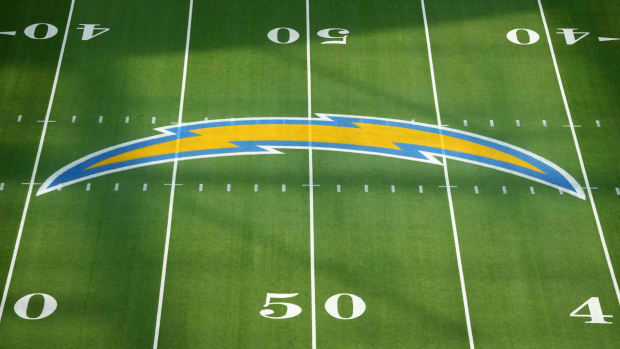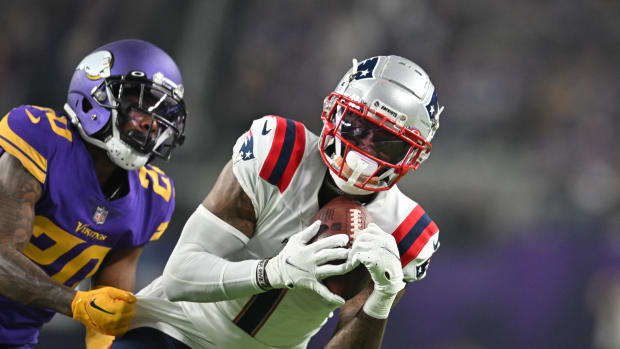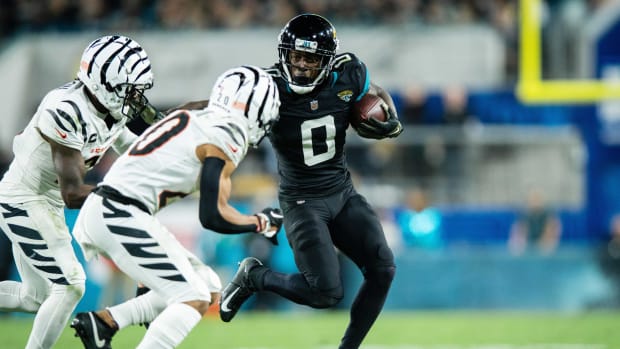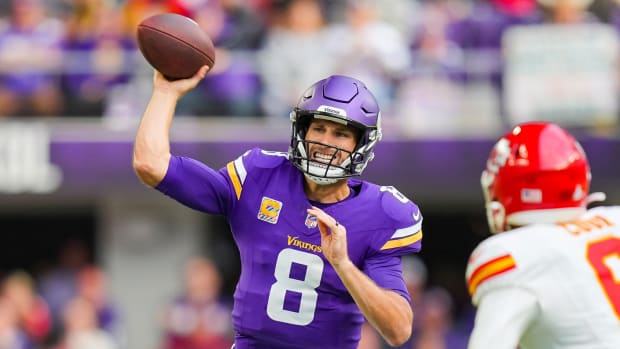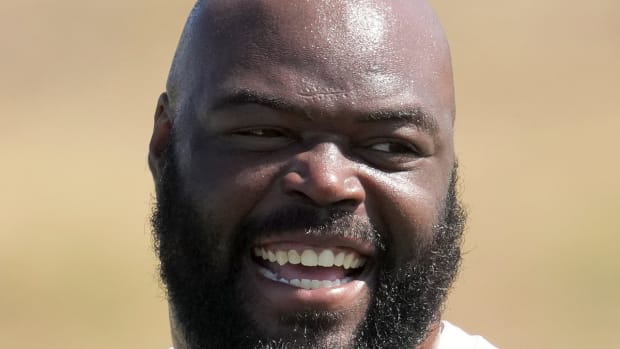The NFL's Hidden Talents: Best functionally mobile quarterbacks
When we talk about the attributes common to the NFL's best quarterbacks, functional mobility is one of the more underrated among them. And when we talk about functional mobility, we're not talking about quarterbacks running to run. When Colin Kaepernick reads a man defense, knows that the cornerbacks are trotting downfield in trail coverage and realizes that it will be easier to run through a 40-yard outside opening than it will be to pick up his third read, that's a weapon, to be sure—but it's not a weapon exclusive to great quarterbacks. Taking your eyes off the field to tuck the ball and run is a base strategy for extremely mobile quarterbacks.
• KLEMKO: A behind-the-scenes look at draft week for an NFL agent
Instead, functional mobility can better be summarized as the work a quarterback does in and just around the pocket—the boxing ring-sized area in which the truly great passers do much of their work. Within the construct of functional mobility, there are different ways to do it. Nobody will ever mistake Tom Brady for Russell Wilson, but Brady gets his work done—and faces a disproportionately small amount of pressure—because he reads defensive fronts, aligns his timing to oncoming pressure and can dance quite adroitly in the pocket. Indeed, though Brady's been in the news for some pretty interesting and unrelated stories of late, his ability to evade pressure with short-area footwork is well worth watching, if we want to take our eyes off the Wells Report damage for a few minutes.
And at this point, we probably do.
Aaron Rodgers: Expanding the Pocket
Could Marcus Mariota become the next Aaron Rodgers or Drew Brees?
Since he became the Packers' starting quarterback for good in 2008, Rodgers has displayed running speed that is both deceptive and extremely dangerous. He's not often regarded as a mobile quarterback, but he's dynamite in the open field, and he's ridiculously efficient when he's rolling out either on designed plays or under pressure. Rodgers does this because he knows how to read the entire field on the run, and he also understands when to cut the field in half when he's on the move.
This two-play sequence in Green Bay's 38-17 Week 7 win over the Panthers. Rodgers finished his day with 19 completions in 22 attempts for 255 yards, three touchdowns and no interceptions. He also amassed 21 rushing yards on three carries, and 16 of those yards came on this 16-yard sprint with 4:35 left in the first half.
That put the ball at the Carolina three-yard line, at which point Rodgers drove the Panthers' estimable defense nuts with a three-yard touchdown pass to Randall Cobb. The Panthers read to the front side out of a blitz look, but it didn't matter, because of one other problem -- Rodgers is the league's most accurate passer when he's on the move. That's why he can re-shape the pocket as he sees fit. Ben Roethlisberger has also been great at this for years.
Tom Brady: Pocket Movement
How Patriots, Cowboys, Steelers will replace their suspended superstars
In the first half of Super Bowl XLIX, Seahawks defensive linemen Michael Bennett was killing New England's offensive line. Dave DeGuglielmo, who coaches that line, knew it was coming. During Media Day that week, he said that he saw Bennett as a Reggie White-type player because he could bring pressure from any gap. Indeed, through New England's first two drives, Bennett lined up at left and right defensive end, left and right defensive tackle, and nose tackle—and brought the heat from all five areas. Bennett didn't have a sack in the game, but his five quarterback hurries and two quarterback hits were felt throughout the game.
The Patriots' strategy through most of the game was to eat away at Seattle's defense with shorter passes to belay that pressure and make things happen underneath the Seahawks' base Cover-1 and Cover-3 defenses, but Seattle was able to time a lot of it. Eventually, Brady had to start dancing intelligently, and that's what he did in these two examples.
This 17-yard completion to Julian Edelman with 4:48 left in the third quarter was negated because center Bryan Stork was busted for holding, but watch how Brady evades Bennett after the defender blows up a double team. Brady has long been noted for his peripheral vision—opponents will tell you that it seems he has eyes in the back of his head—and he also keeps his eyes downfield for a back-side read. That's how it's done, kids.
The play with 10:58 left in the game in which Julian Edelman somehow created yards after the catch despite the fact that he was absolutely clocked by safety Kam Chancellor was certainly an impressive and game-changing event. But it wouldn't have happened without Brady's awareness in the pocket—he had edge pressure from both sides, he moved up in the pocket, and still threw with anticipation. The moral of the story with guys like Brady and Manning is that you don't have to run a 4.5 40-yard dash to beat the enemy with your feet.
• SI.com's complete coverage of the Deflategate saga
Drew Brees: Eluding and Evading
Projecting NFC standings, division by division, as off-season nears end
Quarterbacks like Drew Brees, Michael Vick and Russell Wilson roll out to their dominant hand side (right side for Brees and Wilson; left side for Vick) because they're all six feet tall or less, and rolling out allows them to find visibility areas in increased line splits on the move. The best counter to such a strategy is to load the quarterback's front side with extra defenders, which also works because generally, there will be more potential targets on that front side.
Brees developed into an amazing pocket quarterback (Vick had his moments, and Wilson is getting close), but he's also able to use his mobility to create big-play opportunities in situations when other quarterbacks would have to eat the ball and fast-forward to the next play.
A great example of this was Brees' 11-yard touchdown pass to tight end Jimmy Graham with 2:55 left in the third quarter of New Orleans' overtime loss to the 49ers. Brees had to pinball his way out of two defenders just to get the ball out, and he did it with a near-field read, outstanding timing and deadly accuracy. Wilson aspires to be the next Brees, and he may be someday with this level of pocket awareness.
That's why functional mobility is so important. It doesn't take an average quarterback and make him great—it takes a great quarterback and makes him nearly unbeatable.





































